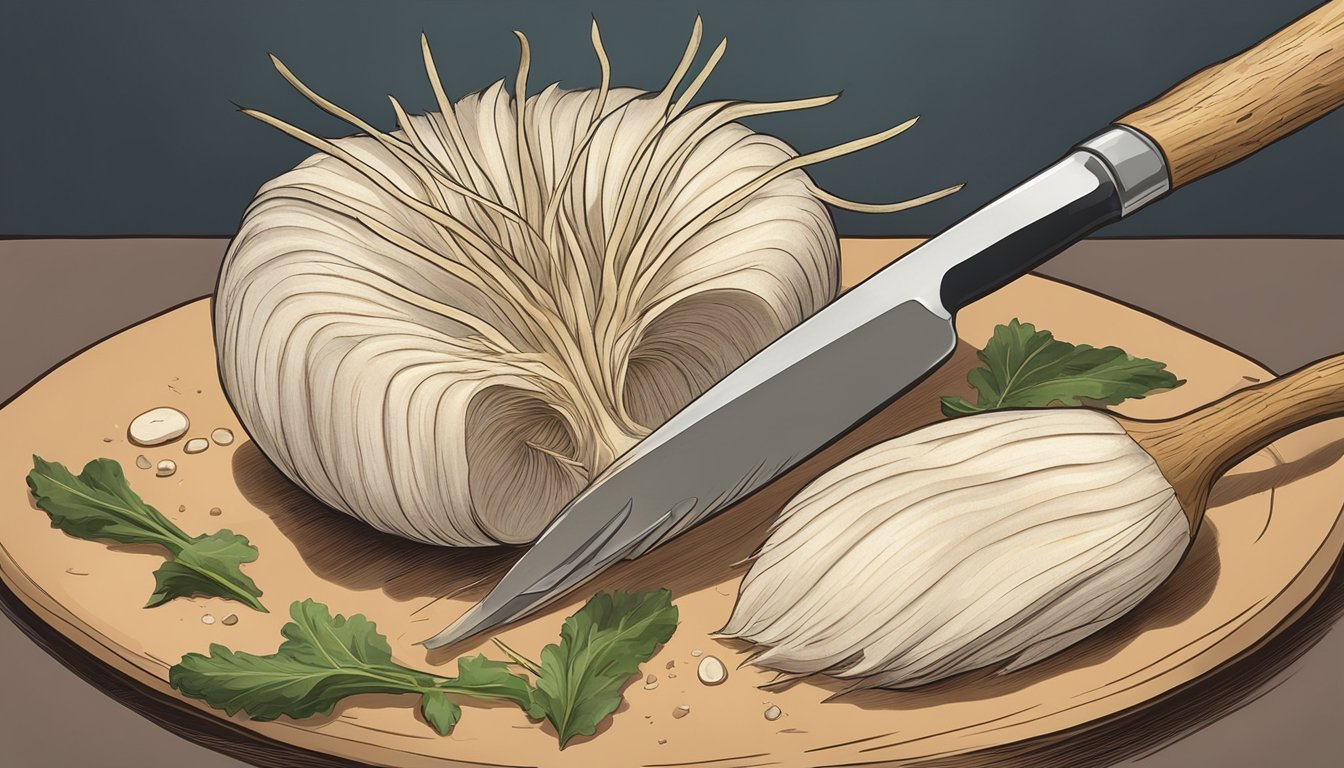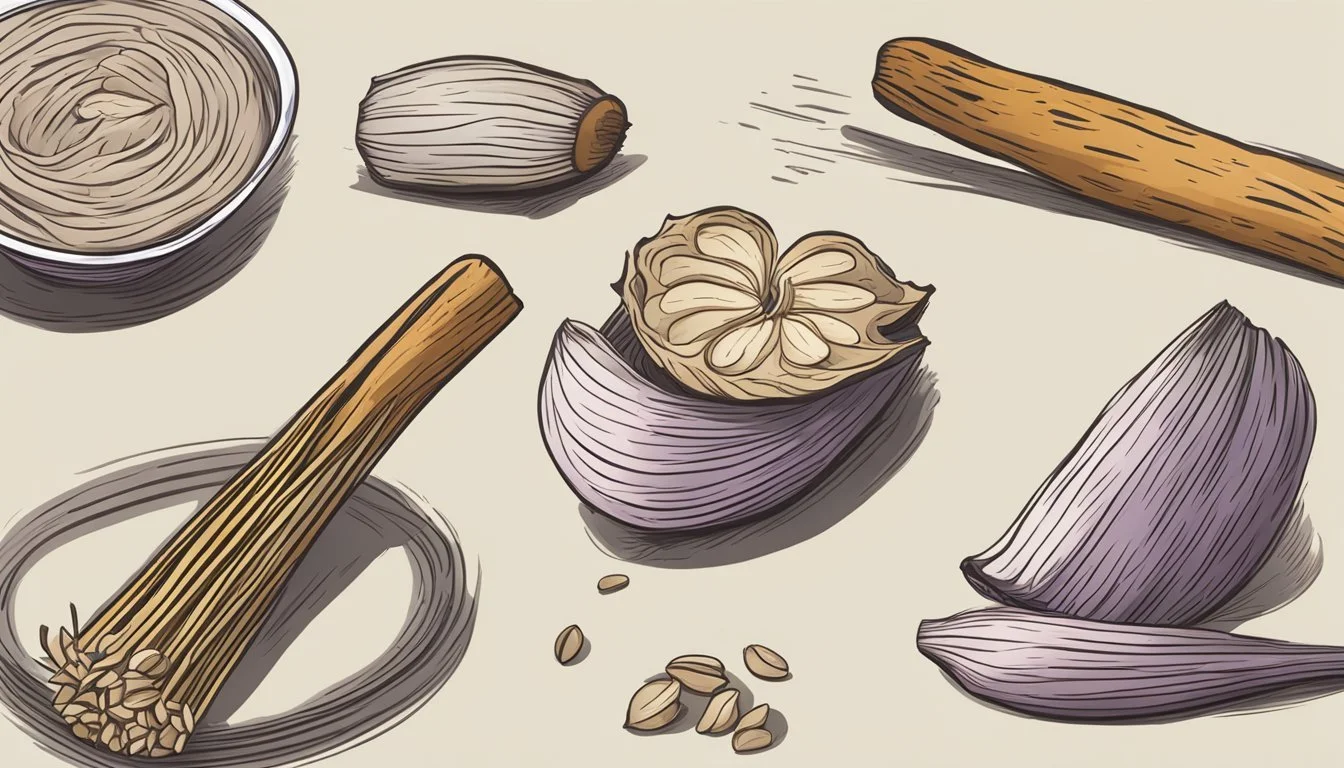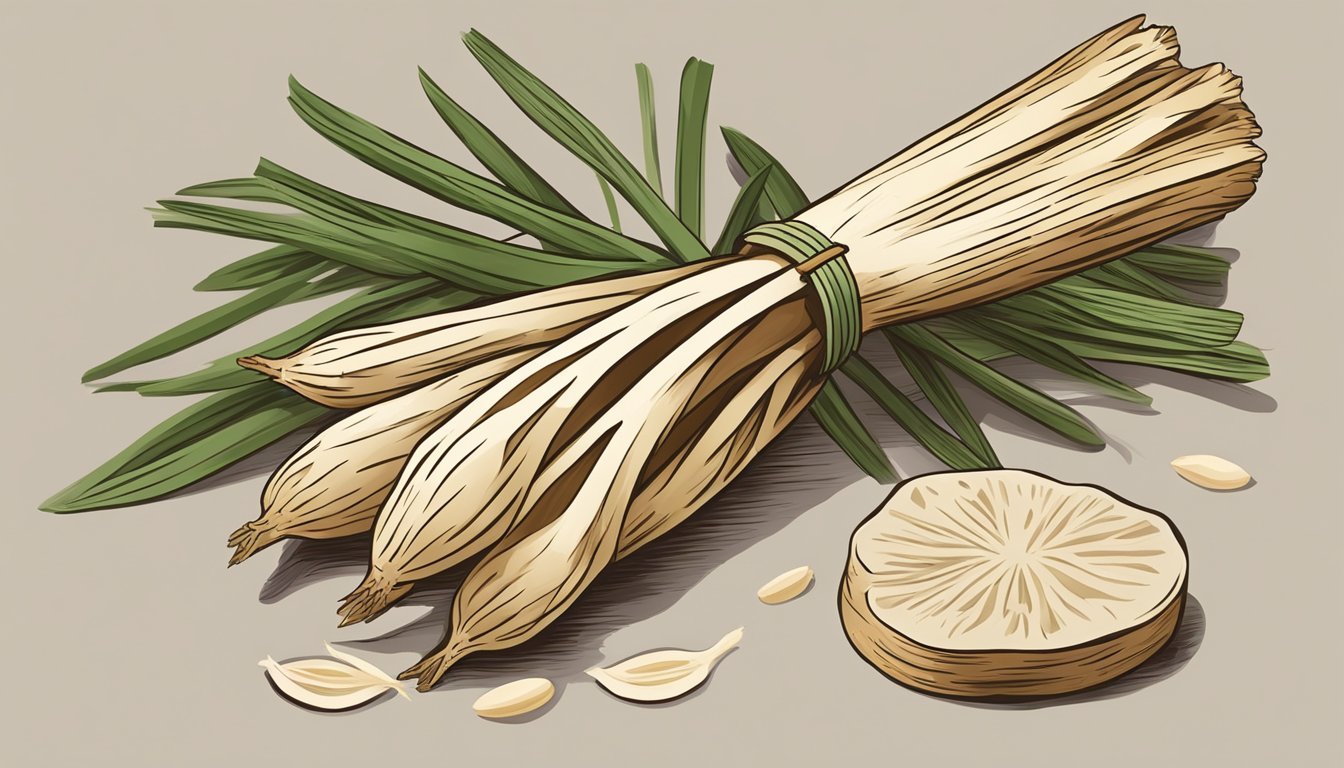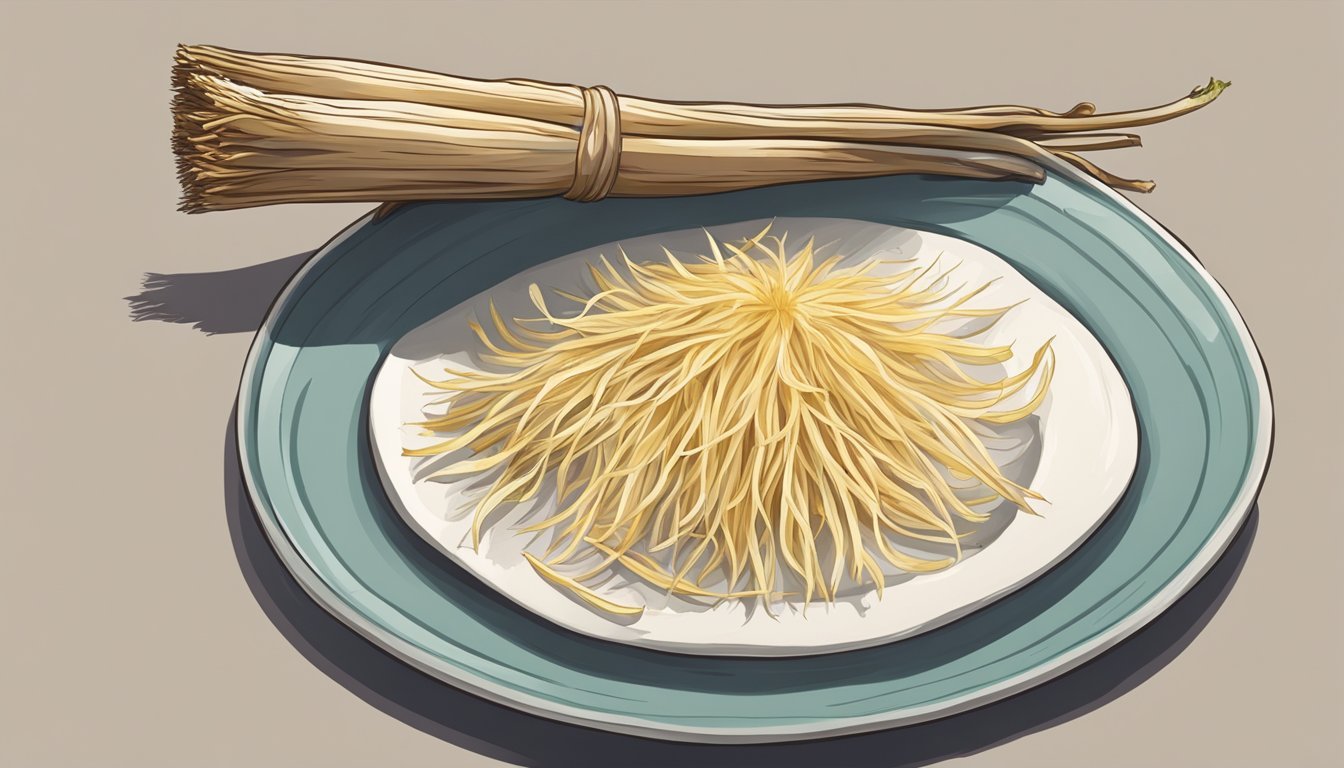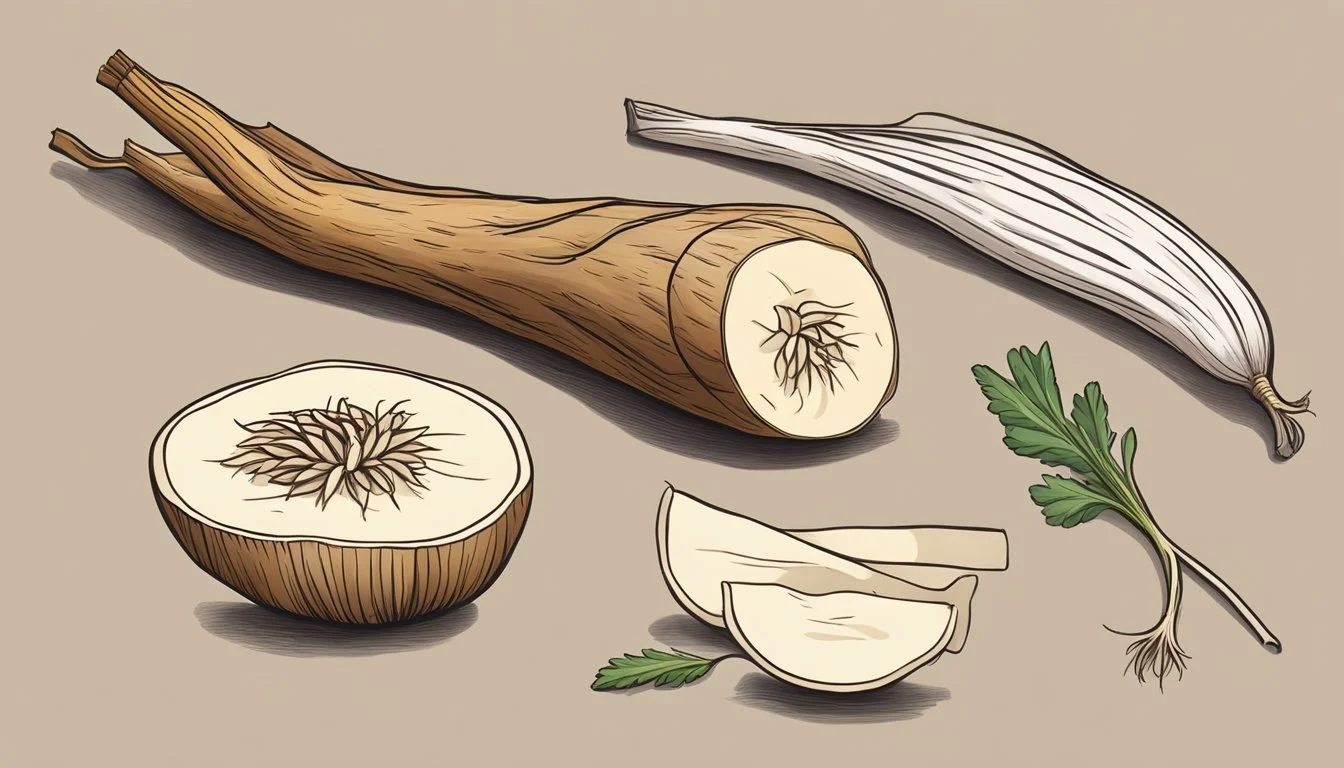How to Eat a Salsify Root
A Simple Guide to Enjoying This Unique Vegetable
Salsify, scientifically known as Tragopogon porrifolius, and often referred to as the oyster plant or vegetable oyster, is a lesser-known root vegetable that deserves a place at the table for its unique flavor and nutritional benefits. It has a long, white, tapering root and green foliage above ground, edible when young. When cooked, salsify is said to have a flavor reminiscent of oysters (What wine goes well with oysters?), which is why it earned its seafood-related nicknames. This attribute makes it an interesting ingredient for those looking to add variety to their vegetable intake.
Preparing salsify involves first scrubbing it under cold water. Traditionally, the thin skin is not peeled but rather well-scrubbed, as it’s believed that a significant portion of the nutrients and flavors are contained just beneath the surface. The ends are then trimmed, and the salsify can be cut into pieces, typically about an inch wide, for cooking. It can be prepared in multiple ways – roasted with a simple dressing of olive oil, salt, and pepper or made more complex with the addition of brown sugar, paprika, or chili powder.
Salsify's versatility extends beyond roasting; it can be boiled, mashed, used in soups and stews, or even creamed. This root vegetable holds a bounty of health benefits by being rich in dietary fiber and iron, an essential mineral for maintaining healthy hair growth and promoting overall wellbeing. Given its health benefits and distinctive taste, salsify makes an excellent addition to one's culinary repertoire.
Understanding Salsify
Salsify is a lesser-known root vegetable that offers unique flavors and a bundle of nutritional benefits. It's essential for consumers to grasp both its origin and the health advantages it carries.
Origins and Characteristics
Salsify, often dubbed the "oyster plant," is originally from Europe and has been cultivated since ancient times. It consists of two main types: the black salsify (Scorzonera hispanica) and the white salsify (Tragopogon porrifolius). This root vegetable resembles a thin parsnip with creamy white flesh and a skin that ranges from tan to dark brown.
Its texture and flavor are likened to artichoke hearts or oysters. The roots should ideally stay in the ground until they are ready to be consumed, as they can become limp relatively quickly after harvest. People living in climates where the ground freezes might opt to harvest salsify just before the first freeze to retain its freshness.
Nutritional Value
Salsify is not only versatile in the kitchen but also a powerhouse of nutrition. It is loaded with fiber, which is beneficial for digestive health. A serving of salsify can provide a good amount of essential minerals and vitamins. Some of the key nutrients found in salsify include:
Iron: crucial for healthy blood cells and hair growth.
Vitamin C: supports the immune system and acts as an antioxidant.
Calcium: necessary for strong bones and teeth.
Potassium: aids in muscle function and heart health.
Phosphorus: important for the body's energy usage and storage.
Here is a tabulated overview of the nutritional profile per 100 grams of salsify:
Nutrient Amount Fiber High Iron Good Source Vitamin C Present Calcium Moderate Potassium Significant Phosphorus Adequate
While it is rich in these nutrients, salsify also contributes a variety of other health benefits, including potential roles in controlling diabetes and promoting gut health. The root vegetable is a commendable addition to any diet seeking to balance taste with nutritional fulfillment.
Cultivation Tips
When cultivating salsify, it is important to focus on proper seed placement, ongoing care, and appropriate harvesting techniques to ensure a healthy crop.
Planting Salsify Seeds
Salsify seeds thrive best when sown directly into the garden. The ideal time to plant is in early spring as soon as the soil can be worked. To achieve optimal growth, they should be planted in well-drained soil that is rich in organic matter. The soil should be loosened to a depth of 8 to 12 inches to allow the long roots to develop unimpeded.
Depth: Plant seeds 1 inch deep.
Spacing: Space seeds or groups of 2-3 seeds every 6 inches.
Rows: If planting in rows, maintain at least 1 foot between the rows.
Growing and Caring for Salsify
Salsify requires full sun and consistent moisture for proper growth, without the soil becoming waterlogged. It prefers a soil pH between 6.0 and 6.8. As the plant matures, gardeners should thin seedlings allowing about 9 inches of space between plants.
Watering: Keep the soil moist but not soggy.
Thinning: When seedlings are a few inches tall, thin to prevent overcrowding.
Harvesting Salsify
Salsify is usually ready for harvest approximately 120 to 150 days after planting. The roots are best harvested after a frost, which can sweeten the flavor. Care must be taken not to damage the roots during harvest, as they are quite delicate.
Timing: Harvest after a light frost for the best flavor.
Method: Loosen the soil around the plant with a fork gently and pull the root out carefully.
This perennial vegetable's edible parts extend to the roots and the leaves, with the leaves often used in salads. Salsify is known for its flowers as well, which resemble those of the dandelion and can add visual interest to the garden before the plant is harvested for its root.
Preparation Techniques
Proper preparation of salsify root maximizes both its flavor and nutritional benefits. The root requires thorough cleaning and careful cooking to transform it into a delicious part of a meal.
Cleaning and Peeling
First and foremost, one must scrub the salsify root under running water using a vegetable brush to remove any dirt. It is advisable to keep the skin intact while doing this, as it protects the flesh beneath. After scrubbing, trim the ends of the salsify. In cases where peeling is necessary, promptly submerge the peeled roots into a bowl of water with lemon juice to prevent discoloration, which occurs quickly once the flesh is exposed to air.
Cooking Methods
Various cooking methods can be applied to salsify to bring out its unique flavor profile, which is often likened to oysters or artichokes. (What wine goes well with artichokes?)
Boiling: To boil salsify, one should place the cleaned and peeled root into a pot of salted water. Once tender, the salsify can be easily mashed or used in other dishes.
Roasting: For roasting, cut the salsify into 1-inch pieces and toss with olive oil, salt, and pepper, or for a different flavor, brown sugar, paprika, or chili powder. Arrange on a baking sheet and bake in an oven preheated to 425 degrees F.
Sautéing: Sliced salsify can be sautéed in butter over medium heat. Season with salt and pepper to taste, cooking until golden brown.
Steaming: To steam salsify, place the pieces in a steamer basket over boiling water. Steamed salsify can be enjoyed with a splash of lemon juice or a pat of butter.
Frying: For a crispy take, one can soak salsify slices in a bowl of cold salt water, then dry and fry in an air fryer or deep fryer until golden and crispy.
Whether one prefers their salsify root mashed, braised, steamed, or crisped up through frying, these techniques each offer a distinct texture and flavor to feature the vegetable's versatility.
Salsify Recipes
Salsify root provides a versatile base for a range of dishes, from simple, butter-rich preparations to complex gratins and stews. Each recipe spotlights the vegetable’s delicate flavor, often compared to artichoke hearts.
Simple Salsify Dishes
To begin with simpler fare, salsify can be roasted or sautéed. For roasting, one should scrub the salsify and cut it into one-inch pieces, then toss with olive oil, and season with salt, pepper, or other spices before arranging them on a baking sheet and roasting at 425 degrees F. This method emphasizes the root's inherent sweetness. Alternatively, salsify can be boiled until tender, peeled, then sliced and sautéed in butter for a rich finish.
Complex Salsify Creations
Moving to more elaborate dishes, one can incorporate salsify into hearty gratins or creamy stews. Incorporating cream, mushrooms, and cheese, a salsify gratin involves layering thin slices of the root with a creamy sauce and grated cheese before baking to achieve a golden, bubbly crust. When crafting stews, salsify acts as a thickener, its starchy content complementing broths and harmonizing with ingredients like mushrooms and artichoke hearts.
Salsify Accompaniments
Salsify's subtle flavor makes it an excellent accompaniment to main dishes. It can be transformed into a puree with butter and cream, offering a smooth, velvety texture akin to mashed potatoes but with a distinctive taste. It's equally at home in salads, imparting a nuanced, slightly sweet taste. When lemon juice is added to sliced, raw salsify, it can create a refreshing element to a salad, while it also pairs well in soups, adding depth and nuance.
Storing Salsify
When it comes to storing salsify, one should always be mindful of the root's sensitivity to dryness and light. Proper storage methods are key to maintaining the freshness and flavor of salsify roots.
Immediately After Harvest: Freshly harvested salsify roots should be cleaned gently with a brush to remove soil. If one plans to store salsify for more than a few days, it's recommended to keep the soil on as it helps in preserving them. Avoid washing the roots before storage as this can promote rot.
Short-Term Storage: For short-term storage, salsify can be placed in a plastic bag with air holes or wrapped in a damp cloth to maintain humidity. It is essential to store salsify in the refrigerator's crisper drawer, where it can stay fresh for about one to two weeks.
Long-Term Storage:
In the Fridge: Salsify can be stored in the refrigerator for up to two months if kept in a perforated plastic bag with a slightly damp paper towel.
In a Root Cellar: With optimal conditions — cool, humid, and dark — salsify may be stored in sand in a root cellar. The temperature should stay around 32°F to 40°F (0°C to 4.4°C). Layer the roots in sand, ensuring they do not touch each other to prevent decay.
Before Use: Once one decides to use the stored salsify, it's best to soak the roots in water briefly. This will not only make them easier to clean but can also revitalize any roots that have slightly dehydrated during storage.
By adhering to these methods, one ensures that the salsify roots retain their characteristic flavor and texture, ready to be enjoyed at their best in a variety of dishes.
Salsify in Cuisine
Salsify root, often described as the oyster plant due to its delicate flavor, holds a venerable place in global cuisines and carries with it a rich historical narrative.
Global Salsify Usage
Salsify is predominantly utilized in European cuisines, with countries like France and Germany embracing it in various traditional dishes. In France, it is especially valued for its subtle taste and is often incorporated into stews and soups. German cooks similarly treasure salsify, incorporating the root into hearty meals. The preparation methods vary widely, from being boiled and mixed into mash, to being sliced and fried until golden brown, evoking a crunchy texture.
Traditionally, salsify has been eaten during the winter months when other vegetables were scarce in Europe. Today, it continues to be a versatile ingredient that lends itself well to roasting, frying, and even as a puree, revealing its capacity to adapt to contemporary culinary trends.
Historical Significance
Dating back to the time of the ancient Greeks and Romans, salsify has been a culinary staple. Historical records reveal that these civilizations appreciated it both for its dietary benefits and taste profile. Through the Middle Ages, it sustained its popularity and became a common sight in many kitchen gardens.
During the Victorian era, salsify was considered a fine vegetable, reserved for sophisticated dishes and upper-class tables. As European influence spread, so did the recognition of this root, although its overall global prevalence never reached the heights of other vegetables. Despite its fall from popularity in modern times, salsify remains a unique link to culinary heritage and is cherished by chefs and food enthusiasts who value its history and mild, distinctive flavor.
Health Benefits and Uses
Salsify root, often considered a superfood, is not only versatile in culinary uses but also carries a range of health benefits due to its rich nutrient profile.
Dietary Advantages
Salsify is abundant in dietary fiber, both soluble and insoluble, which aids in maintaining a healthy digestive system. It also plays a role in slowing digestion to optimize nutrient absorption from foods. In terms of micronutrients, salsify is a good source of thiamin (Vitamin B1), which is essential for energy metabolism and nerve function.
Nutrient Benefit Dietary Fiber Promotes regular bowel movements Thiamin Supports energy production
Additionally, consuming salsify may help in lowering blood pressure due to its potassium content, which mitigates the effects of sodium in the cardiovascular system.
Medicinal Applications
While salsify is predominantly included in diets for its nutritive value, it has been traditionally used in various medicinal treatments. Its properties as a diuretic can aid in fluid regulation and may have a beneficial effect on the liver and gallbladder. Historical applications also include the use of salsify to treat snakebites although such uses are more anecdotal than scientifically proven.
Application Purpose Diuretic Effect Helps in fluid balance and kidney function Gallbladder Aid Supports bile production and flow
Regular consumption of salsify can contribute to overall wellbeing, though it should be part of a balanced diet and not the sole solution for health issues.
Purchasing and Availability
Salsify, often overlooked, is a versatile root vegetable that resembles a mix of turnips and asparagus (What wine goes well with asparagus?)in flavor. Procuring salsify may require a visit to specialty food shops or farmers' markets, but the effort is rewarded with its unique culinary uses.
Where to Find Salsify
Salsify is less common in conventional supermarkets but can be found in specialty grocery stores, health food shops, and farmers' markets. It is sometimes sold alongside other root vegetables such as carrots, potatoes, and celeriac. Availability may vary by location, but asking a store manager or local farmers could yield sources for fresh salsify roots.
Seasonality and Selection
Salsify is typically in season during the fall and winter months, aligning with the harvest periods of many root vegetables. When selecting salsify, one should look for firm roots, free of soft spots and blemishes. Fresh salsify should have a smooth, unblemished surface, resembling long, skinny parsnips or carrots. It is advisable to select roots that are medium-sized, as larger ones may have a woody core, and smaller ones may be less flavorful.
Alternative Roots Comparison
In this section, we explore how salsify compares to other root vegetables and outline its unique characteristics.
Salsify Versus Other Roots
Salsify is often measured against similar root vegetables such as parsnips, carrots, and turnips. While all these roots are versatile in cooking and provide various nutrients, they have distinct flavor profiles and textures:
Carrots: Crunchy when raw and sweet once cooked, carrots are high in beta-carotene.
Parsnips: Resembling a white carrot, parsnips have a sweet, nutty taste and are particularly high in potassium.
Turnips: Slightly peppery with a hearty texture, turnips are rich in vitamin C.
Salsify, also known as white salsify or Tragopogon porrifolius, is lesser-known but is likened to the taste of artichoke hearts or a hint of asparagus when cooked. Its close relative, black salsify or Scorzonera hispanica, often referred to as Spanish salsify, is similar in taste but has a darker, almost black skin.
Asparagus: Not a root, but asparagus offers a similar flavor to salsify and is a common comparison for taste description.
Celeriac: This knobby root has a unique, strong flavor reminiscent of celery and parsley.
Nutritional Content (per 100g):
Vegetable Calories Vitamin C Potassium Fiber Salsify 82 8 mg 380 mg 3.3 g Carrots 41 5.9 mg 320 mg 2.8 g Parsnips 75 17 mg 375 mg 4.9 g Turnips 28 21 mg 191 mg 2.2 g
Unique Qualities of Salsify
Salsify distinguishes itself with its creamy texture and a flavor profile that has been compared to oysters, earning it the nickname "oyster plant." The interior flesh of both white salsify and black salsify is creamy white and can discolor upon cutting, similar to how an apple might. To prevent this, one can place cut salsify in water with a bit of lemon juice.
Salsify's nutrient profile is also impressive. It provides a high amount of fiber and a range of vitamins and minerals such as iron, calcium, thiamin, and phosphorus. Relative to other root vegetables, salsify is a notable source of potassium, comparable to that of a banana.
When considering root vegetables for cooking or nutritional purposes, one should consider the unique flavor and texture that salsify brings to the table, as well as its noteworthy nutrient contributions.
Preparing the Soil for Salsify
Soil Composition and pH
For salsify cultivation, loamy soil with good drainage is ideal. This root vegetable thrives in a pH range between 6.0 and 7.0, where the soil is neither too acidic nor too alkaline. Gardeners should conduct a soil test to determine pH levels and amend the soil accordingly, using lime to raise the pH or sulfur to lower it.
Soil Preparation
Before planting salsify, one must ensure the soil is well prepared. Deep tilling to a depth of at least 12 inches helps to loosen the soil, allowing salsify's long roots to penetrate and grow without obstruction. Remove stones and clumps that might cause the roots to fork.
Nutrient Requirements
Salsify doesn't require high fertility, but incorporating compost enhances the soil structure and nutrient content. A balanced application of a general-purpose fertilizer can provide an initial boost.
Planting Depth and Spacing
Aspect Specification Planting Depth 0.5 inch (1.3 cm) Row Spacing 18 inches (45 cm) Seed Spacing 3 inches (7.6 cm) Thinning 6 inches (15 cm)
Sow seeds directly into the garden bed, as salsify roots do not fare well with transplanting. Once seedlings emerge, thin them to prevent crowding, which can result in smaller roots. Maintaining consistent soil moisture is critical for seed germination and root development.
Ongoing Care
Throughout the growing season, it is important to keep the salsify bed weed-free. Regular weeding ensures that salsify doesn't compete for nutrients and water. However, take care not to disturb the developing roots. Mulching can assist in moisture retention and weed suppression.
Harvesting Techniques
When it comes to harvesting salsify roots, timing and proper storage are key to retaining the vegetable's flavor and texture.
When to Harvest Salsify
Salsify is typically ready for harvest in the fall, ideally once the foliage begins to die back. For optimal flavor, one should wait until the roots have been subjected to a few frosts. To remove salsify from the ground, it's best to use a garden fork or spade, inserting the tool deep enough to avoid cutting the root.
How to Store Harvested Salsify
After harvesting, salsify roots should be cleaned thoroughly to remove excess soil, then allowed to dry. For long-term storage, they can be left in the ground and harvested as needed, provided the ground does not freeze over. If there's a risk of freezing, salsify should be dug up before the first hard freeze and stored in a cool, dry place.
Taste Profile
Salsify, commonly known as the oyster plant, has a unique taste that has been compared to a mix of artichoke hearts and a subtle hint of oysters. This root vegetable, a member of the dandelion family, is often praised for its culinary versatility and distinctive flavor profile.
Flavor Comparisons
Artichoke: Salsify's flavor bears a close resemblance to artichoke hearts, offering a similar earthy and nutty taste.
Parsnips: It shares flavor notes with parsnips, although salsify tends to have a milder taste.
Asparagus: The root also has a comparable taste to asparagus, though with an additional creamy texture when cooked.
Oysters: While its moniker as the "oyster plant" suggests a seafood-like flavor, the comparison to oysters is mostly subtle and more prominent in its mineral undertones rather than an outright fishy taste.
Salsify is appreciated for its ability to absorb flavors well, making it a versatile addition to a variety of dishes.
Cooking with Herbs and Spices
When cooking salsify root, the thoughtful pairing with herbs and spices can enhance its natural flavors, making it a versatile addition to the culinary repertoire.
Enhancing Salsify Flavors
The gentle, nuanced taste of salsify makes it an excellent canvas for herbs and spices. Butter, with its rich, creamy texture, complements salsify by adding a smooth finish, often used in sautés or as a base for a delicate sauce. To add depth and a hint of brightness, lemon juice can be incorporated, which also helps to maintain the white color of the salsify after peeling.
For a roasted preparation, tossing the salsify in olive oil before roasting can result in a crispy outer texture while preserving the tender interior. To elevate the taste, one might consider adding a sweet and savory touch with maple syrup or brown sugar, creating a beautiful caramelization upon roasting.
Herbs such as thyme, rosemary, and parsley can subtly infuse salsify with aromatic flavors, either when added to the roasting process or stirred into a cream-based sauce. These combinations work synergistically to bring out the earthy tones of this root vegetable, making it a delectable dish for any occasion.
Unique Dishes Featuring Salsify
Salsify, a lesser-known root vegetable, is appreciated for its artichoke-like taste and versatility in cooking. Chefs can incorporate salsify into a range of distinctive dishes, elevating its unique flavor through various cooking methods.
Creating Signature Salsify Plates
Salads: Thinly sliced raw salsify can add a crunchy, nutty flavor to salads. Its taste, often compared to oysters or artichokes (how long do artichokes last?), blends well with greens and a vinaigrette dressing.
Cream of Salsify Soup: A luxurious, creamy soup can be created by blending cooked salsify with stock, cream, and seasoning. This can be garnished with herbs for a delicate finish.
Roasted Salsify: Tossed with olive oil, salt, pepper or other seasonings, salsify can be roasted until it develops a caramelized exterior while retaining a tender interior.
Mashed Salsify: Similar to mashed potatoes, salsify can be boiled until soft, mashed with butter and cream, and seasoned to taste. It offers a unique spin on a classic comfort food.
Salsify Gratin: Salsify roots can be layered with cheese and bechamel sauce before being baked to create a savory, melt-in-your-mouth gratin.
Soups and Stews: Salsify acts as a hearty addition to soups and stews, contributing its favorable taste and a pleasant texture that holds well during long cooking processes.
These dishes showcase salsify's potential to stand out or complement other ingredients in a meal, making it a valuable addition to the culinary world.


